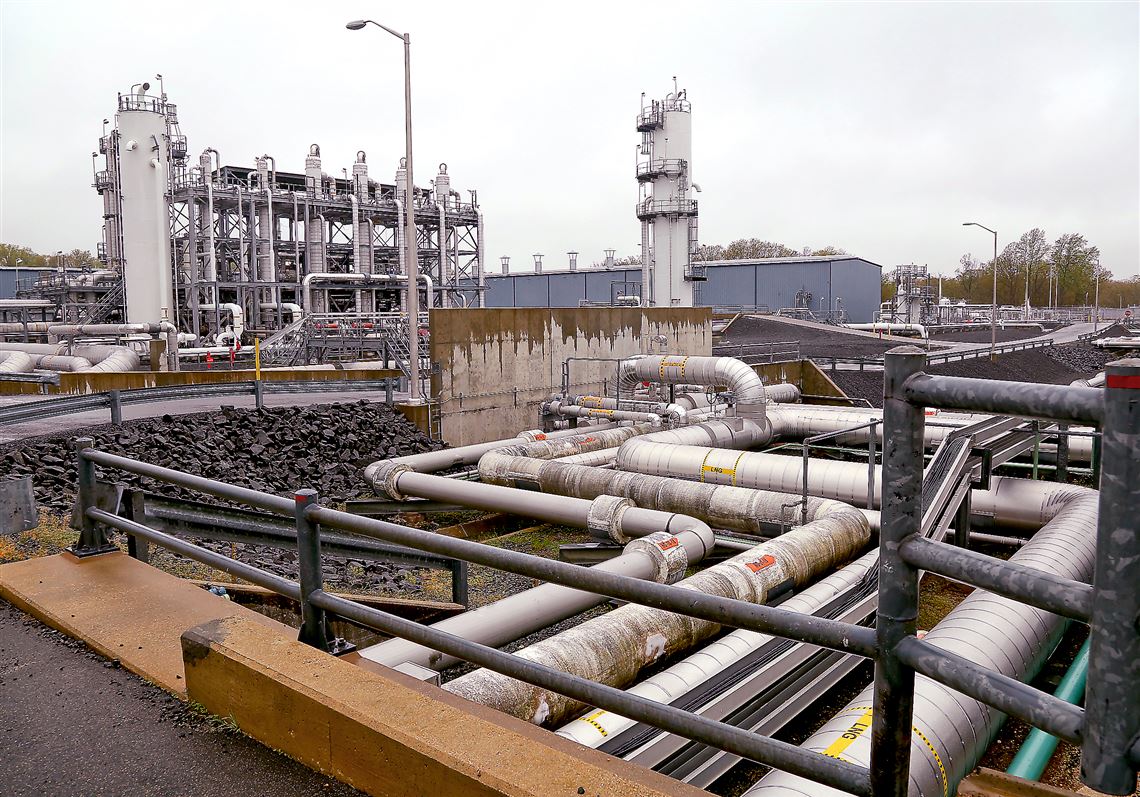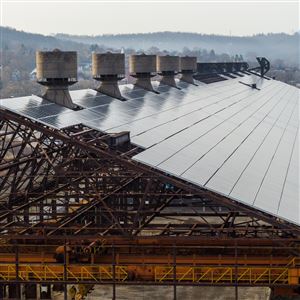There were two themes to the latest financial reports released by Appalachian natural gas companies in recent days. One looks to the future; the other to the past. One is very quotable, and the other unspoken.
“The dialogue around energy has been fundamentally altered,” Toby Rice, CEO of Downtown-based EQT, said Thursday morning. “The invasion of Ukraine has accelerated an already emerging global energy crisis while also reasserting security as a foundational pillar of energy and climate policy.”
He reiterated his call to “unleash U.S. LNG,” or liquefied natural gas, and suggested that politicians and the public are starting to accept the role of natural gas in both climate and geopolitics. Mr. Rice also said EQT is considering investing directly in LNG facilities.
At the same time, Nick DeIuliis, CEO of Cecil-based CNX Resources Corp., spoke to the same analysts about the same topic.
“We bring quality of life and security to society. Without us, everything stops,” Mr. DeIuliis said. “And the world sees what happens if things like domestic natural gas is taken for granted or, worse yet, if it's marginalized.”
The two company leaders spoke as natural gas prices pushed close to $7 per million British thermal units.
But instead of basking in the highest prices in over a decade, the companies reported billions of dollars in losses on hedges and derivatives intended to shield shareholders from price volatility and, in recent years, from prices dipping even further into their trough.
Over the past three months, EQT recorded a loss of $3 billion on derivatives not designated as hedges — financial instruments that companies deploy to manage commodity price volatility. CNX’s loss on commodity derivatives last quarter was around $1.7 billion. Texas-based Range Resources posted a nearly $1 billion derivative loss. Antero Resources reported a $700 million loss on commodity derivatives.
The losses pushed net income into the negative for all four Appalachian gas producers.
Now, all are rushing to restructure their hedges and layer other financial instruments on top of existing ones in order to take advantage of high natural gas prices.
Protecting against price swings
Natural gas companies use several different financial instruments to manage price volatility.
They sell hedges, which promise a quantity of gas at what could be a fixed price or a cost indexed to a particular price at a future date. For example, according to data compiled by Bloomberg, the public companies most active in Appalachia have hedged more than half of their production this year at prices averaging below $3 per million Btu.
They did so expecting that historically low natural gas prices — the spot price for natural gas has stayed below $3 for much of the six years between 2016 and 2021 — would persist.
Last month, gas prices hit $5 and have continued to rise.
EQT has 65% of its 2022 production hedged, as well as 45% of next year’s. When the company saw that gas prices were rising quickly, it decided not to add any more hedges but instead to restructure its swaps into collars, which give it a band of prices with a floor ($5) and a ceiling ($10).
This gives “shareholders direct exposure to the recent rally in both near and long-dated natural gas prices,” Mr. Rice said.
Prices will go higher still, he predicted.
If two years ago, EQT had been offered opportunities to hedge natural gas at $4, “we’d be hedging that all day long,” Mr. Rice said. Two years ago, the price of natural gas was around $1.74.
But the world is “energy short,” he said, and that isn’t likely to change very soon.
What’s the cure?
As shale gas companies entered what they called manufacturing mode — where the emphasis is on stable production with predictable revenue — they hedged to ensure that a falling natural gas price wouldn’t sink the ship. It wasn’t worth chasing potential spikes because those tended to be short lived, company leaders had said in previous earnings calls.
But companies now see no end in sight for the natural gas price rally caused by a global jump in demand, a disruption of gas flows in Europe caused by the war in Ukraine, and gas supplies trapped in regions with full pipelines.
It used to be said that the cure for low natural gas prices is low natural gas prices, which would eventually incentivize companies to drill less, decrease available supply and drive up the cost of what remained in the market.
The cure for high prices in the U.S. and across the globe, the gas companies say, follows the same logic, but the answer isn’t more drilling — at least not yet. No Appalachian player is racing to grow production outside of previously announced “maintenance mode.”
To cure high prices, they need long-term signals, executives said.
“There's only a certain amount of capacity and only a certain amount of local demand to consume the gas that's produced right here in Appalachia,” Chad Griffith, CNX’s chief operating officer, said during the company’s earnings call on Thursday. When “the ability to export more molecules out of Appalachia begin(s) to increase, we're right here ready, and prepared to be able to increase our production, along with it.”
The pipeline situation
According to data compiled by S&P Global Commodity Insights, pipeline capacity to carry Appalachian gas out of the region grew six fold over the past seven years.
Gas companies filled up the pipes as soon as they became available. For most of last year and so far this year, more than 90% of that pipeline space, carrying gas out of the Northeast region, has been filled.
About half of the gas produced in Appalachia stays here. The rest goes elsewhere.
A number of pipelines have been canceled after years of investment, delays, and opposition. The remaining big project on the table to carry gas outside the Appalachian region — Mountain Valley Pipeline — is still fighting legal battles.
“You’re seen cost escalations, long delays and it’s still tied up in the courts,” said Richard Redash, head of global gas planning at S&P.
The real driver of gas demand in the United States, according to Mr. Redash, is the Gulf Coast, where there is a buildout of liquefied natural gas facilities and a lot of industrial demand. It’s also an area where it’s easier to get pipelines permitted and constructed, he said.
Mr. Redash also noted that pipelines tied to LNG facilities have an easier road to completion than those destined to domestic customers.
“For our industry to solve problems and provide solutions is unfortunately is going to take years,” Mr. DeIuliis said. “The domestic energy industry has been under attack ... (for) over a decade by these policies. And now, it will take nearly as long to correct that. That's assuming, policymakers wake up to the reality.”
Mr. DeIuliis, who likes to refer to people who work in the natural gas industry as “the doers” and to those who don’t “do” as “the takers,” blamed policies ranging from the Paris Climate Accord to the Regional Greenhouse Gas Initiative, a multistate carbon market that Pennsylvania recently joined, for stifling the capacity of U.S. shale players to respond to high prices and security concerns highlighted by Russia’s invasion of Ukraine.
Echoing EQT’s new branding, Mr. DeIuliis also called for U.S. gas to be “unleashed.”
The executives promised their shareholders that they will remain disciplined even in the face of higher prices now — while they wait for policies to incentivize long-term growth. This time, the buildout won’t be speculative, they said.
“The difference now versus in the past — we’re going to need to see the pipelines, LNG facilities, long-term contracts all lined up,” Mr. Rice said.
“Good luck unleashing everything,” an analyst said, signing off from the EQT call.
Anya Litvak: alitvak@post-gazette.com
First Published: April 29, 2022, 1:19 p.m.
Updated: April 29, 2022, 1:19 p.m.






















